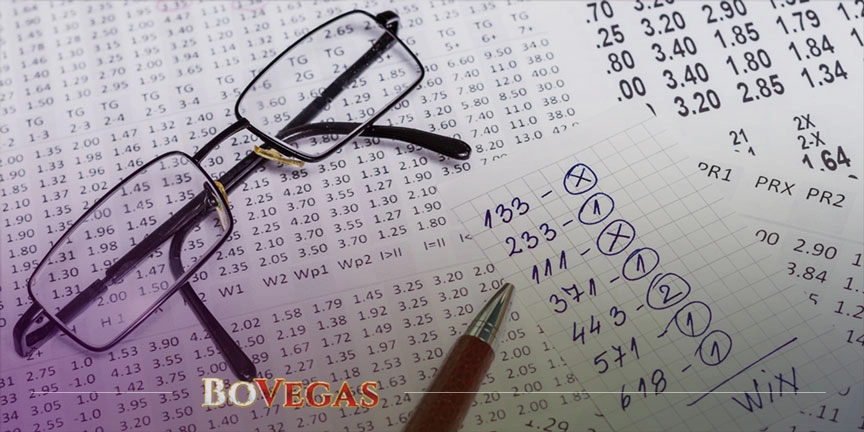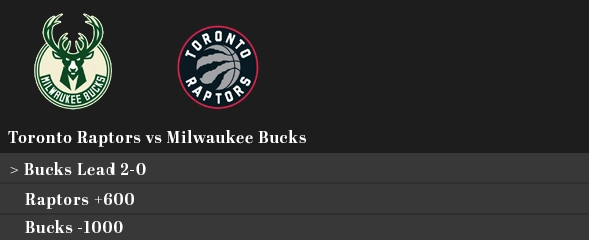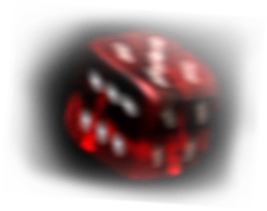



Did you know that the odds of you winning the Oscars are 1:11,500? Calculating the odds shows your chance of success versus your chance of failure. And who knows, maybe you’re going to be the next lucky one out of thousands of others who missed their chance? However, successful gamblers never just leave it to luck. Instead, they are sure to carefully calculate the odds for themselves; and they only bet when they’re sure enough of the expected outcome!
It’s also worth mentioning that the tables of betting odds made by bookmakers often include their own profit rates. For this reason, if you do win by betting on the most probable option, you’re going to end up winning much less than you expected, because bookmaker calculations don’t correspond to real probabilities. Thus, if your goal is to win, you need to puzzle out how to read the odds and how to use them to your favor. So let’s get started!
To start with, you don’t have to be afraid of these big tables of odds, with their huge array of numbers, spread across all those rows and columns. As a rule, the different formats used to mark the odds pretty much amount to the same thing in the end. And of course, you can easily convert these types of odds into one another by performing simple calculations or using online calculators.
Generally, what are the odds? The truth is that whenever we talk about ‘the odds,’ we mean the likelihood of an event occurring in real life. Usually, it is more convenient to express it in percentages (aka probabilities): in fractional, decimal, positive, and negative numbers.
So now it’s time to learn how to read and understand different formats used in odds writing.
This odds ratio is the most popular and the one that is most easy for everyone to understand. Sometimes, they are also called British or Irish odds. Look at these statistics below:
The probability of being killed by a vending machine is 1/210.
This basically means that there is a one to 210 chance of this event occurring. Fractional odds typically utilize a slash “/” or a hyphen “-” in short listings like 1-210 or 1/210.
| Be careful: Such a method of marking your chances of winning often leads to the occurrence of a so-called “gambler’s fallacy,” when you begin to calculate 210 chances one by one, and expect that the opposite chance will definitely come 211th. Truth is, various chances occur randomly; rather than being one, which is then followed by 210 opposite chances in a row. |
So, what these fractional odds really mean in the gambling world? Now it becomes more interesting! Because 12 to 1 or 12/1 odds simply mean that you can win $12 from every dollar wagered. Plus, you get your $1 in return.
Of course, this is a very favorable situation, but in reality, it may be very hard to achieve. If you open any bookmaker odds list, you can see the ratings of the upcoming events, such as sports games, for instance.
Remember that you are interested in the highest odds, as distinguished from the implied stakes. Meanwhile, when many gamblers are betting on their favorite sports teams, which are more likely to win, the odds of winning big money when betting on the same team are little to nothing. On the other hand, you would win more if you bet on the other team; but that team might be much less likely to win.
For Example:
Team A has 4/5 odds of winning the next game
Team B has 8/1 odds of winning it
This means that viewers favor Team A and bet less on Team B. Meanwhile, if it just so happens that Team B wins, you’ll multiply your stakes by x8 and if you placed a bet on Team A, you’ll lose.
To get more profits from your betting options, you need to look for the highest rates of fractional odds on the left-hand side.
For example, 8.1/10 odds means the bookmaker pays out $8.1 for every $10 bet. So if you win, you will get your $10 back plus additional $8.1. It’s like almost doubling your bet, which is not an insane amount of win, yet it’s still a profit!
Decimal odds may seem difficult to grasp at first sight; but in reality, they are even simpler than fractional ones. So if you’ve heard something about digital, continental, or European odds — they’re all the same as decimal odds. So, what are they all about?
The decimal number shows exactly how much profit you’re going to get per each dollar staked. Yes, it really is as simple as that! Just look at the table below.

So if you bet for the team at Home in the Manchester City-Burnley game, you will only get $1.09. Meanwhile, they have the highest probability of winning. At the same time, if you bet for the Away team, you will get as high as $23 for each $1 staked. And in case of a draw, you will multiply your stakes by 11. However, the probability of the latter event happening is quite low.
For many gamblers out there, counting in decimal odds is more convenient, especially when it comes to sports betting. You don’t have to add up the stakes you’ve made to the net profit, as with fractional odds. Here you simply know that you need to multiply your stake by the number of the decimal odds you’re betting with.
For example, if the odds are 1.8 and you bet $100, your eventual profit will be 100×1.8= $180. Or otherwise, you will lose $100.
The North American odds ratio takes into consideration stakes that are worth $100. You don’t necessarily have to wager such an amount, though, as it’s quite easy to understand the amount of the return value. This particular system is most commonly used in sports betting and cyber sports betting.
In stats for American odds, you will find negative and positive numbers. Don’t be afraid of them — those numbers are pretty easy to understand! Now, let’s look at them a bit more closely.
Positive numbers often indicate the stakes for underdogs. They show what amount of money (typically, in US dollars) you would win in case if you wager $100. Here we are usually talking about a less likely outcome. Although, these may still bring you some big profits!
So, in the table below, one must wager $100 for the Toronto Raptors in order to win $600. Add to this number your initial stake, and you will get a total of $700 if the Raptors do win. Even though, as we have already mentioned it before, bookmakers usually assign “pluses” to less promising probabilities.

At the same time, you ought to wager $1000 for the Milwaukee Bucks, to win only $100. Clearly, the Bucks are everyone’s favorites, and we can see at the top of the table that they actually took a 2-0 lead. However, don’t be upset with such low profits. Given that the Bucks win, you still get your stake of $1000 back, plus $100 on top of that! Not a big win, but not a big risk also — because to most NBA fans, the result of this game seems fairly predictable.
The implied probability is another simple ratio to understand because it calculates the percentage of the event occurrence. However, there’s a catch in this one. The thing is that if you look at bookmakers’ listings of implied probabilities, they won’t be completely accurate.
The reason for that is simple. They include a so-called bookmaker’s edge, which often reaches an amount of 100% over the true probability odds. The latter 100% would be the bookmaker’s margin.
So if you learn to convert various types of odds into an implied probability, you can work towards potentially winning a lot of money on betting online. Just calculate your version and compare it to the chosen bookmaker’s implied probability percentages. If your assessment shows a greater number, then you know that you can trust the values of this particular bookmaker, and they won’t charge much of a margin on your profits.
Now that you know how to read and calculate odds in sports betting and gambling, you can employ a more intuitive approach to these activities, thus increasing your chances of winning big. However, the difficulties come when the results are easily predictable; because then it appears that betters have fewer chances to significantly increase their profits. However, bookmakers often offer juicy bonuses and promotions that can increase your winnings.
The odds in sports betting show the chances of a particular team winning over another one. As a rule, you’ll see odds in specific tables presented by the sportsbook with whom you are betting. You can either bet online, or you can attend sports betting shops, which are still popular in the UK. Choose the odds system that you best understand. The UK system is fairly simple (½ odds of winning means 50% probability). If you’ve been betting in Europe, American odds may seem a bit unusual, but as soon as you get used to it, it may become your favorite!
This is the American way of writing the odds. The ‘+’ sign means a team is a favorite in the upcoming game, while the ‘-’ sign means that the team is an underdog. Thus, +200 means that you will win $200 if you bet $100 and this team wins. Note that you’ll get your wager back plus the winnings. So, you’ll get back $300, where $100 would be your initial bet and $200 would be pure profit.
A moneyline bet is the most simple and straightforward and indicates that you are betting your money on a particular team winning. Important: the term ‘betting line’ may refer to the current odds in betting or a point spread. Finally, the closing line indicates the final bets right before the game starts.
Odds in sports betting are simply ways to write down the probability of a certain outcome. The difficult mix of statistics lets bookmakers make calculations about what outcome is the most likely to happen. Then, when people bet, odds may change. Let’s say that one NBA game may have -10,000 odds on a favorite team; this means that if you bet $10,000 on the winner, you’ll get only $100 gross.

Because the gambling industry is connected to money, it will always be discussed in the framework of morality. Especially now that online betting is on the rise, ethical issues rise to the forefront. While many people ask themselves: “Is gambling a sin?”, they tend to confuse addictive behavior or particular unfairness with casino entertainment in […]
Gambling has been a form of entertainment since ancient times. Along with the changes in society, it also has been continuously changing, adjusting to a new pace of life and technological standards. Nowadays, we’re living in a highly digitalized era, and gambling is a fast-growing phenomenon in both the online and mobile sectors. While there […]
The lavish and often flamboyant lifestyle that many celebrities follow may strike people from outside the media as strange, or even outright bizarre. Charity, farming, BDSM, multiple adoptions, substance abuse – all these are the various weird and wonderful things that contribute to the complex image of a classic Hollywood persona. But the real cherry […]
Today it’s hard to find a single person in Australia who doesn’t know James Packer. James Packer has been on the Forbes list and is #9 in Australia’s 50 Richest, as of last year. His net worth is estimated at $2,8 billion. At the same time, his primary source of wealth is the casino business, […]
If you love gambling and have been to a land-based casino at least once, you may have thought about becoming a dealer. Playing the same game but from the opposite side, while communicating with other players, sounds like a dream job, right? A dealer is a straightforward job, and you will be the heart and […]
On Monday September 14, MGM announced that it plans to open its first smoke-free casino at the end of September, when Park MGM will finally reopen its venues to players and tourists. The resort comprises around 2,990 rooms and various restaurants, and it’s set to be reopened on September 30. The venue has been closed […]
Online gambling has undoubtedly taken a place of true supremacy over the casino industry during the pandemic. And the reason for that is quite clear: online casinos are more accessible, and you can always count on some encouragement from the casino administration to help you boost your game. However, this digital revolution has only been […]
The large selection of online gambling sites out there can make players somewhat puzzled, and give them a feeling of uncertainty about making the right choice of casino. Each online gambling venue offers its own conditions, games, and various bonuses, of course; but the most important thing is the reliability of the casino and the […]